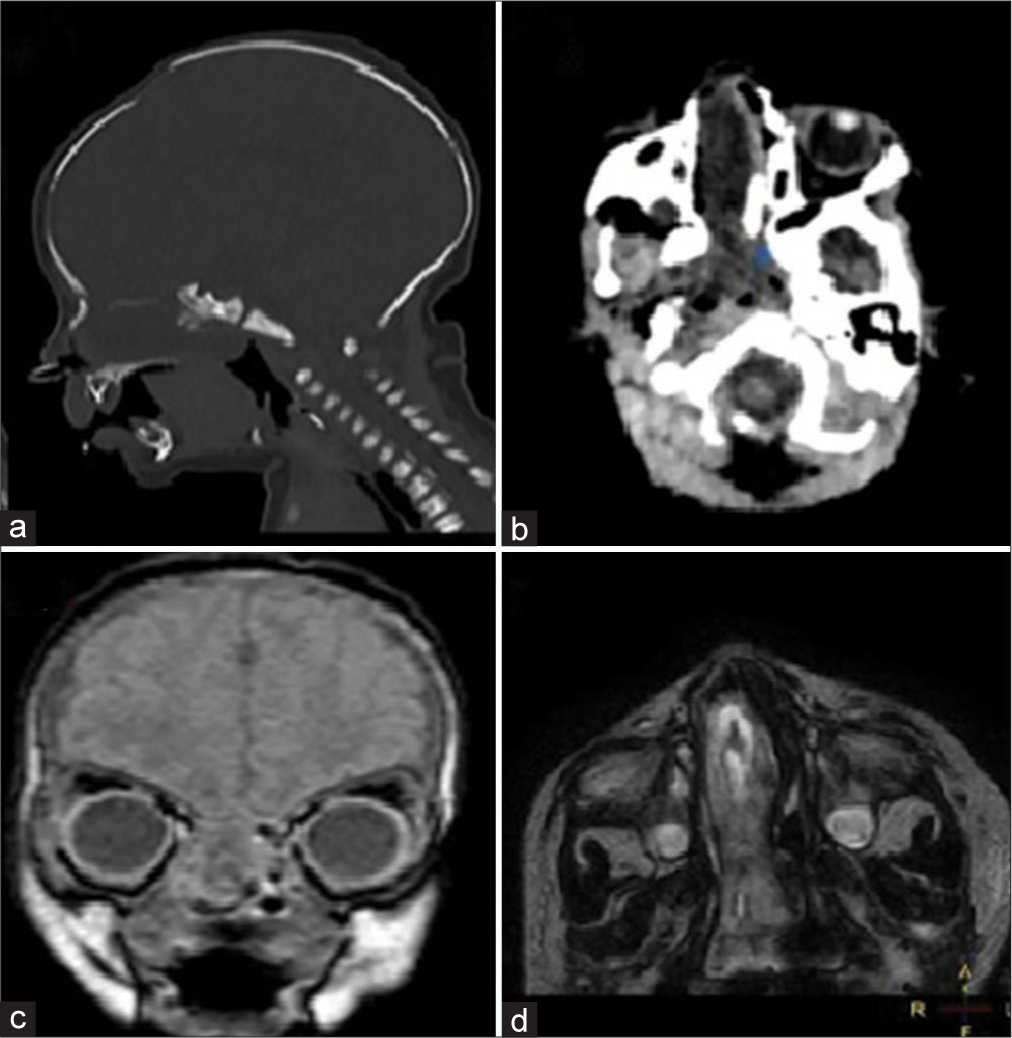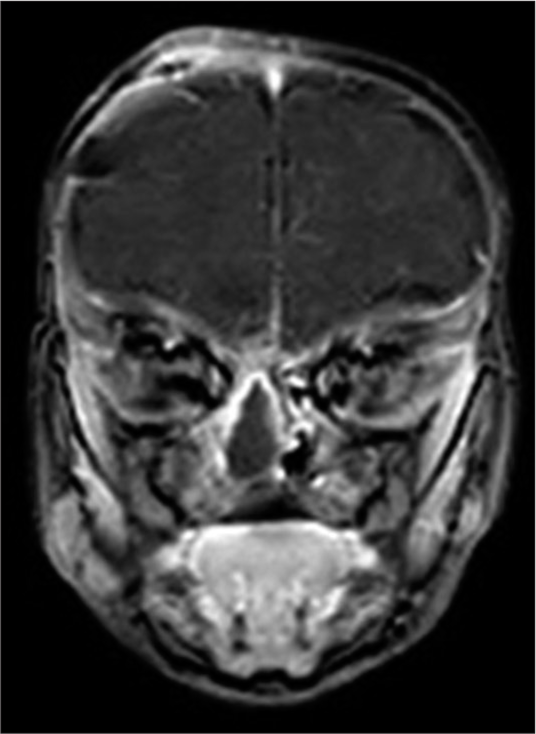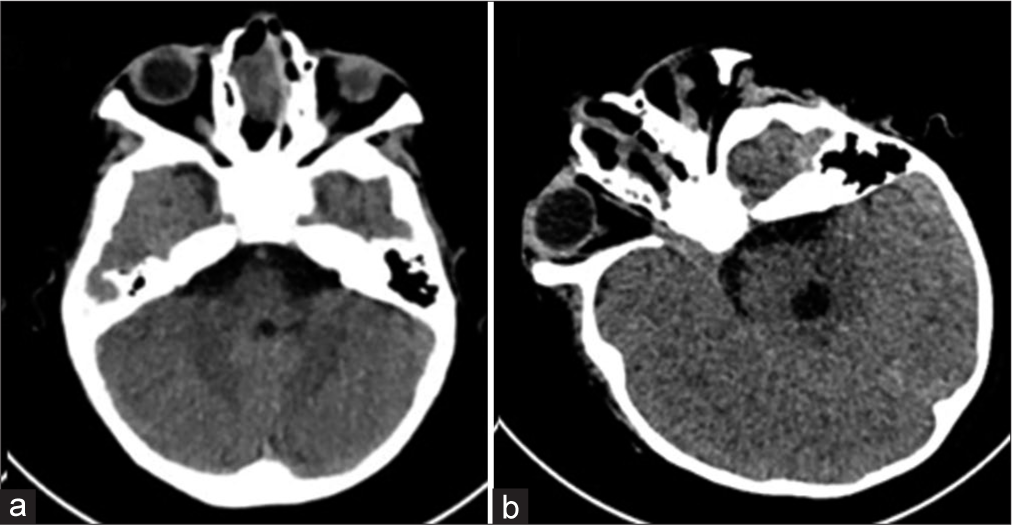- Department of Neurosurgery, Al-Helal Hospital, Hebron, Palestinian Territory Occupied
- Medical Student, Faculty of Medicine, Palestine Polytechnic University, Hebron, Palestinian Territory Occupied
- Department of Pediatrics, National Research Center, Cairo, Egypt
- Department of Neurosurgery, King Abdullah Medical City, Makkah, Saudi Arabia
- Department of Radiology, Alia Governmental Hospital, Hebron, Palestinian Territory Occupied
- Department of Neurosurgery, Kasr Elainy School of Medicine, Research and Teaching Hospitals, Cairo University, Cairo, Egypt
- Department of Neurosurgery, Security Forces Hospital, Dammam, Saudi Arabia
Correspondence Address:
Waeel O. Hamouda, Department of Neurosurgery, Kasr Elainy School of Medicine, Research and Teaching Hospitals, Cairo University, Cairo, Egypt.
DOI:10.25259/SNI_248_2024
Copyright: © 2024 Surgical Neurology International This is an open-access article distributed under the terms of the Creative Commons Attribution-Non Commercial-Share Alike 4.0 License, which allows others to remix, transform, and build upon the work non-commercially, as long as the author is credited and the new creations are licensed under the identical terms.How to cite this article: Imad Ibrahim Talahma1, Aya Khader Zawahra2, Falasteen Jameel Almakhtoob2, Fatima Iyad Shawar2, Khulood Marwan Sharabati2, Raghad Faisal Dwaik2, Marwa K. Abdelshafy3, Ahmed Adel Farag4, Ahmad M. AbuAyyash5, Waeel O. Hamouda6,7. Large transethmoidal meningoencephalocele in a neonate involving three discrete defects in lamina cribriform: A case report. 09-Aug-2024;15:275
How to cite this URL: Imad Ibrahim Talahma1, Aya Khader Zawahra2, Falasteen Jameel Almakhtoob2, Fatima Iyad Shawar2, Khulood Marwan Sharabati2, Raghad Faisal Dwaik2, Marwa K. Abdelshafy3, Ahmed Adel Farag4, Ahmad M. AbuAyyash5, Waeel O. Hamouda6,7. Large transethmoidal meningoencephalocele in a neonate involving three discrete defects in lamina cribriform: A case report. 09-Aug-2024;15:275. Available from: https://surgicalneurologyint.com/surgicalint-articles/13035/
Abstract
Background: Intranasal meningoencephaloceles are rarely encountered in pediatric neurosurgery. The symptoms and clinical features may mimic those of nasal polyps or dermoid cysts. Transethmoidal meningoencephalocele is a rare congenital meningoencephalocele of the anterior skull base with diverse clinical presentation. The appropriate surgical intervention is chosen according to the meningoencephalocele type and location. Radiological examinations such as computed tomography and magnetic resonance imaging are helpful for the differential diagnosis of the encephalocele sac and localization of the cranial bone defect.
Case Description: We are reporting a case of basal meningoencephalocele of the transethmoidal type, which was discovered in a 20-day-old boy presenting with cerebrospinal fluid rhinorrhea, respiratory distress, difficulty in feeding, and meningitis. The preoperative images showed a large herniated intranasal sac with bony discontinuity of the cribriform plate; however, three discrete defects of the cribriform plate with their related discrete herniated sacs were identified intraoperatively. Two staged surgeries were performed in succession: transcranial to separate the sacs from the cranial cavity and seal the anterior fossa floor, followed by transnasal to remove the remnant of the intranasal sacs. Patient symptoms and signs markedly improved after the surgeries.
Conclusion: We highlight the need for urgent intervention at a very young age if the clinical presentation mandates, and also the importance of meticulous intraoperative identification of all bony and dural defects that might be missed in preoperative images to ensure complete repair and prevent recurrence.
Keywords: Cribriform defect, Meningoencephalocele, Neonate, Transethmoidal
INTRODUCTION
An encephalocele is defined as external herniation of intracranial contents through a skull defect. The term meningocele is used when the herniated sac includes meninges only; however, if the herniated sac contains meninges and part of the brain tissues, the term meningoencephalocele is used instead. Meningoencephalocele occurs with an estimated incidence of one in every 35,000 live births.[
Encephalocele can be classified according to the anatomical location of the skull defect. Nearly 75% of encephaloceles are located in the occipital region, whereas 13–15% are located in the frontal ethmoidal region, and 10–12% are located in the basal sphenoidal region.[
This paper aims to discuss the operative management for a case of a new-born boy who is diagnosed with transethmoidal meningoencephaloceles herniating through three discrete bony defects in the cribriform plate.
CASE PRESENTATION
We report a male baby who was delivered at full term by urgent cesarean section (after the failure of induction of normal labor) due to the development of maternal preeclampsia associated with fetal distress. At birth, the baby was breathing normally, his body weight was 3.1 kg, head circumference was 36 cm, and there were no obvious dysmorphic facial features. Prenatal maternal history was negative for episodes of fever or suspected infections, with all prenatal maternal ultrasonography examinations reported as being normal. Family history was negative for any congenital cranial or facial anomalies.
During the 1st week of life, the mother noticed abnormal noisy nasal breathing and attacks of respiratory distress during bottle feeding. Attempts of nasal cleaning at home yielded an intermittent discharge of watery fluid from the nose. The baby was then seen by an otorhinolaryngologist at the age of 10 days, and imaging was requested.
However, at the age of 17 days (before the requested imaging was performed), the baby was admitted to a nearby hospital with the diagnosis of clinical sepsis and suspected meningitis. On admission, he was febrile, tachypneic, in severe respiratory distress, and with continuous yellowish watery nasal discharge. The rest of the physical examination was unremarkable, with no detectable musculoskeletal deformity or neurological deficit. Chest X-ray showed advanced pneumonia. Echocardiogram was normal. Lumbar puncture was done as part of the sepsis work, and analysis of the collected cerebrospinal fluid (CSF) showed a high total leucocytic count with predominant neutrophils. All body cultures, including those from the obtained CSF and the nasal discharge, did not grow any organism. The patient was started on empirical antibiotics (vancomycin and ampicillin) for treatment of neonatal meningitis according to the hospital’s local protocol for a total period of 14 days until repeated CSF analysis and C-reactive protein serum levels were within normal. Computed tomography (CT) followed by magnetic resonance imaging (MRI) of the brain done during the hospital admission showed discontinuity of the cribriform plate on the right side, which seemed to be two medium-sized defects. A soft-tissue mass of low Hounsfield density representing downward intranasal herniation of the intracranial brain tissue was filling the right nasal cavity associated with nasal septal deviation to the left side, causing narrowing of the left nasal cavity. The findings were suggestive of a nasal transethmoidal encephalocele [
Figure 1:
The initial computed tomography (CT) and magnetic resonance imaging (MRI) images used for diagnosis at 21 days of age. (a) CT brain sagittal cuts (bone window) at the level of the right cribriform plate showing two bony defects with a very thin bone plate in between. (b) CT brain axial cuts showing right nasal cavity soft-tissue mass deviating the nasal septum toward the left side. (c) MRI brain coronal images show the continuity of the herniated nasal soft-tissue mass with the intracranial brain tissue through the anterior cranial fossa defect. (d) MRI brain axial images show the herniated soft-tissue mass within the right nasal cavity.
The patient was then referred to another hospital where a pediatric neurosurgeon was available. The surgical intervention was planned to be carried out in two staged surgeries, a transcranial followed by a transnasal one. The transcranial intervention was performed first at the age of 38 days to separate the endonasal mass from its intracranial connection and then seal the defect in the dura and the cribriform lamina. With the patient in a supine position, a bicoronal skin flab was reflected anteriorly with preservation and preparation of a vascularized pericranium flap. A right frontal craniotomy was then performed, followed by extradural subfrontal dissection along the anterior cranial fossa floor to locate the neck of the herniated sac of the encephalocele. Thorough and meticulous dissection and inspection under microscopic magnification identified three discrete encephaloceles herniating through three different and separate cribriform plate bony defects of variable sizes. We assume that the crowdedness of these three herniated sacs in the small neonatal nasal cavity made it difficult to distinguish them separately in the preoperative radiological images. The neck of these three sacs was circumferentially dissected before being transected using bipolar coagulation at their connection with the basal dura of the frontal lobe. No other dural defects or bony could be identified. After delineation of the edges of the three bony defects in the cribriform plate, a four-layer basal dura reconstruction was done using synthetic nonabsorbable dural substitute material augmented with bio glue, with the last most superficial layer being the reflected pericranium flap. The bone flap was then replaced to close the craniotomy defect, and the scalp was closed in the standard fashion after placing a subgaleal vacuum drain, which was kept for 3 days.
The postoperative course was uneventful, where the patient was admitted to the pediatric intensive care unit for the first few postoperative days for close observation. Postoperative antibiotics were continued for about 2 weeks. Postoperative MRI showed adequate reconstruction of the anterior cranial fossa floor with complete separation of the intracranial and nasal cavities [
Figure 2:
Postoperative magnetic resonance imaging of the brain with coronal images done after the transcranial surgery showing a layered obliteration and separation of the anterior cranial fossa floor from the nasal cavity beneath. The remnant (to be removed later) soft-tissue sac can still be appreciated in the nasal cavity.
Figure 3:
Pre- and post-operative computed tomography of the brain with axial images done before and after the transnasal surgery. (a) The herniated sac remnant can still be visualized occupying the right nasal cavity before surgery. (b) No more brain tissue can be seen within the right nasal cavity after surgery.
DISCUSSION
Manengioencephalocele is a type of open neural tube defect (NTD) characterized by a herniation of brain tissue that is covered by dura matter through a defect in the skull.[
Transnasal tissue biopsy should be avoided before surgery as it can lead to CSF leak, meningitis, epistaxis, etc.[
The presence of multiple NTD is not a rare diagnosis; 57 cases have been cited in the literature[
At present, two main hypotheses can explain the embryological development of multiple NTDs. The multisite closure theory[
Although there are different techniques reported in the literature about approaching basal encephaloceles,[
The prognosis for basal encephalocele surgery is satisfactory in general,[
CONCLUSION
Transethmoidal encephaloceles management in neonates is faced with the anatomical and physiological limitations of this vulnerable age group; nevertheless, expedient intervention is sometimes mandated when complications such as CSF leak with meningitis or marked respiratory and feeding difficulties develop. Meticulous intraoperative inspection is inevitable in neonates to confirm complete repair of all dural and bony defects, which might not be easily identified in preoperative radiological studies.
Ethical approval
The Institutional Review Board has waived the ethical approval for this study.
Declaration of patient consent
The authors certify that they have obtained all appropriate patient consent.
Financial support and sponsorship
Nil.
Conflicts of interest
There are no conflicts of interest.
Use of artificial intelligence (AI)-assisted technology for manuscript preparation
The authors confirm that there was no use of artificial intelligence (AI)-assisted technology for assisting in the writing or editing of the manuscript and no images were manipulated using AI.
Disclaimer
The views and opinions expressed in this article are those of the authors and do not necessarily reflect the official policy or position of the Journal or its management. The information contained in this article should not be considered to be medical advice; patients should consult their own physicians for advice as to their specific medical needs.
References
1. Abdel-Aziz M, El-Bosraty H, Qotb M, El-Hamamsy M, El-Sonbaty M, Abdel-Badie H. Nasal encephalocele: Endoscopic excision with anesthetic consideration. Int J Pediatr Otorhinolaryngol. 2010. 74: 869-73
2. Ahmad FU, Dwarakanath S, Sharma BS, Mahapatra AK. Multiple neural tube defects: A clinical series of seven cases and their embryological basis. Pediatr Neurosurg. 2008. 44: 280-7
3. Deora H, Srinivas D, Shukla D, Devi BI, Mishra A, Beniwal M. Multiple-site neural tube defects: Embryogenesis with complete review of existing literature. Neurosurg Focus. 2019. 47: E18
4. Franco D, Alonso N, Ruas R, da Silva Freitas R, Franco T. Transsphenoidal meningoencephalocele associated with cleft lip and palate: Challenges for diagnosis and surgical treatment. Childs Nerv Syst. 2009. 25: 1455-8
5. Jabre A, Tabaddor R, Samaraweera R. Transsphenoidal meningoencephalocele in adults. Surg Neurol. 2000. 54: 183-8
6. Lee JA, Byun YJ, Nguyen SA, Schlosser RJ, Gudis DA. Endonasal endoscopic surgery for pediatric anterior cranial fossa encephaloceles: A systematic review. Int J Pediatr Otorhinolaryngol. 2020. 132: 109919
7. Macfarlane R, Rutka JT, Armstrong D, Phillips J, Posnick J, Forte V. Encephaloceles of the anterior cranial fossa. Pediatr Neurosurg. 1995. 23: 148-58
8. Mahajan C, Rath GP, Dash HH, Bithal PK. Perioperative management of children with encephalocele: An institutional experience. J Neurosurg Anesthesiol. 2011. 23: 352-6
9. Mahalik SK, Vaze D, Kanojia RP, Narasimhan KL, Rao KL. Multiple neural tube defects may not be very rare. Childs Nerv Syst. 2013. 29: 609-19
10. Naidich TP, Altman NR, Braffman BH, McLone DG, Zimmerman RA. Cephaloceles and related malformations. AJNR Am J Neuroradiol. 1992. 13: 655-90
11. Nakatsu T, Uwabe C, Shiota K. Neural tube closure in humans initiates at multiple sites: Evidence from human embryos and implications for the pathogenesis of neural tube defects. Anat Embryol (Berl). 2000. 201: 455-66
12. O’Rahilly R, Müller F. The two sites of fusion of the neural folds and the two neuropores in the human embryo. Teratology. 2002. 65: 162-70
13. Tirumandas M, Sharma A, Gbenimacho I, Shoja MM, Tubbs RS, Oakes WJ. Nasal encephaloceles: A review of etiology, pathophysiology, clinical presentations, diagnosis, treatment, and complications. Childs Nerv Syst. 2013. 29: 739-44
14. Turgut M, Özcan OE, Benli K, Özgen T, Gürçay Ö, Sağlam S. Congenital nasal encephalocele: A review of 35 cases. J Cranio Maxillofacial Surg. 1995. 23: 1-5
15. Van Allen MI, Kalousek DK, Chernoff GF, Juriloff D, Harris M, McGillivray BC. Evidence for multi-site closure of the neural tube in humans. Am J Med Genet. 1993. 47: 723-43









